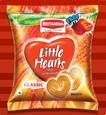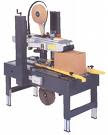By Guy Montague-Jones, 19-Feb-2010
Related topics: Industry drivers
Experts from Unilever, the Food Standards Authority (FSA), National Center for Food Safety and Technology (NCFST) have mapped out future threats to food safety and strategies to tackle them in a new study.
Writing in the International Journal of Food Microbiology, scientists from both sides of the Atlantic pulled together their expertise to give an overview of the trends in technology, consumption, and trade that are likely to affect the prevalence of food-borne illness in the coming year.
The researchers concluded that the most important factors set to increase the burden of food-borne disease in the next few decades are increased global demand for food, international trade, and greater consumption of high-value foods like meat and poultry and fresh produce.
Risk factors
The study authors wrote: “Overall, increased consumption of certain food commodities known to be associated with food borne microbial harzards will increase food borne illness with a reasonably high degree of certainty.
“Examples here would include meat and poultry, driven by an increased ability to pay for high protein foods and fresh produce, driven by a trend towards health.”
Increased demand for refrigerated foods and extended shelf life products, fueled by greater desire for convenience, was also identified as a potential threat to food safety.
With the risk of food borne illnesses expected to rise, the authors set out the policies and tools needed to contain food safety threats.
Here, the scientists said the ability to first detect and investigate a food safety issue and then to develop effective control measures is crucial.
This means investment in effective global surveillance systems, investment in new food safety technologies and detection methods, and research into microbial hazards and their control.
International action
Considering the increasingly global nature of the food industry and food safety issues it is also crucial that countries work together more closely to tackle threats from food borne illnesses.
The authors said: “Conceivably, a country cannot solely rely on its own food safety management systems but would best share best practices and experiences in food safety management with its trading partners.
“In this regard, international standard setting bodies such as Codex Alimentarius might play a helpful role by the development of equivalent food standards aimed at reducing the burden of global diseases and facilitating international trade in food.”
Source: International Journal of Food Microbiology
doi:10.1016/j.ijfoodmicro.2010.01.043
Trends in technology, trade and consumption likely to impact on microbial food safety Authors: T.E. Questeda, P.E. Cooka, L.G.M. Gorrisb, and M.B. Cole
Related topics: Industry drivers
Experts from Unilever, the Food Standards Authority (FSA), National Center for Food Safety and Technology (NCFST) have mapped out future threats to food safety and strategies to tackle them in a new study.
Writing in the International Journal of Food Microbiology, scientists from both sides of the Atlantic pulled together their expertise to give an overview of the trends in technology, consumption, and trade that are likely to affect the prevalence of food-borne illness in the coming year.
The researchers concluded that the most important factors set to increase the burden of food-borne disease in the next few decades are increased global demand for food, international trade, and greater consumption of high-value foods like meat and poultry and fresh produce.
Risk factors
The study authors wrote: “Overall, increased consumption of certain food commodities known to be associated with food borne microbial harzards will increase food borne illness with a reasonably high degree of certainty.
“Examples here would include meat and poultry, driven by an increased ability to pay for high protein foods and fresh produce, driven by a trend towards health.”
Increased demand for refrigerated foods and extended shelf life products, fueled by greater desire for convenience, was also identified as a potential threat to food safety.
With the risk of food borne illnesses expected to rise, the authors set out the policies and tools needed to contain food safety threats.
Here, the scientists said the ability to first detect and investigate a food safety issue and then to develop effective control measures is crucial.
This means investment in effective global surveillance systems, investment in new food safety technologies and detection methods, and research into microbial hazards and their control.
International action
Considering the increasingly global nature of the food industry and food safety issues it is also crucial that countries work together more closely to tackle threats from food borne illnesses.
The authors said: “Conceivably, a country cannot solely rely on its own food safety management systems but would best share best practices and experiences in food safety management with its trading partners.
“In this regard, international standard setting bodies such as Codex Alimentarius might play a helpful role by the development of equivalent food standards aimed at reducing the burden of global diseases and facilitating international trade in food.”
Source: International Journal of Food Microbiology
doi:10.1016/j.ijfoodmicro.2010.01.043
Trends in technology, trade and consumption likely to impact on microbial food safety Authors: T.E. Questeda, P.E. Cooka, L.G.M. Gorrisb, and M.B. Cole





















